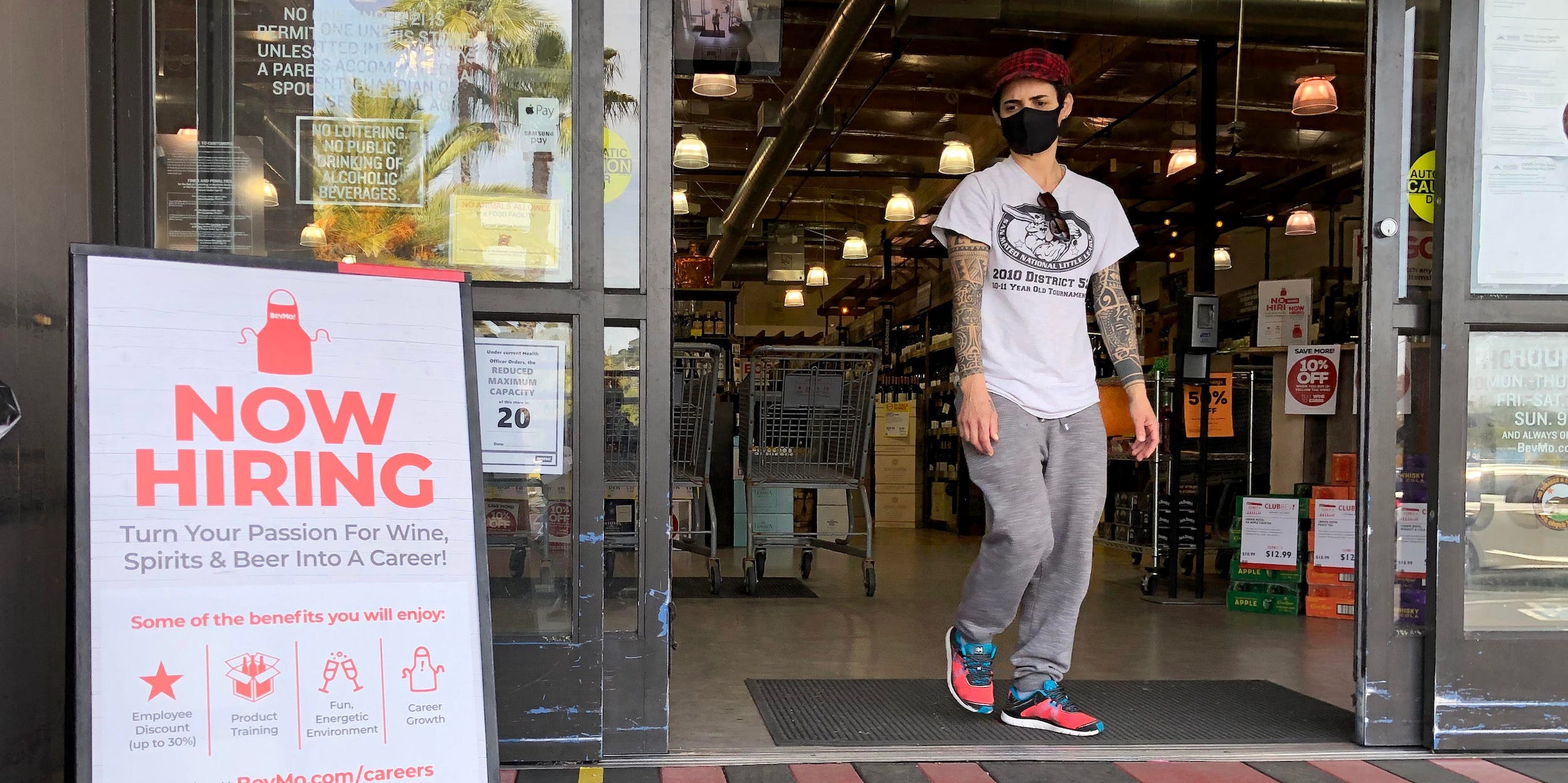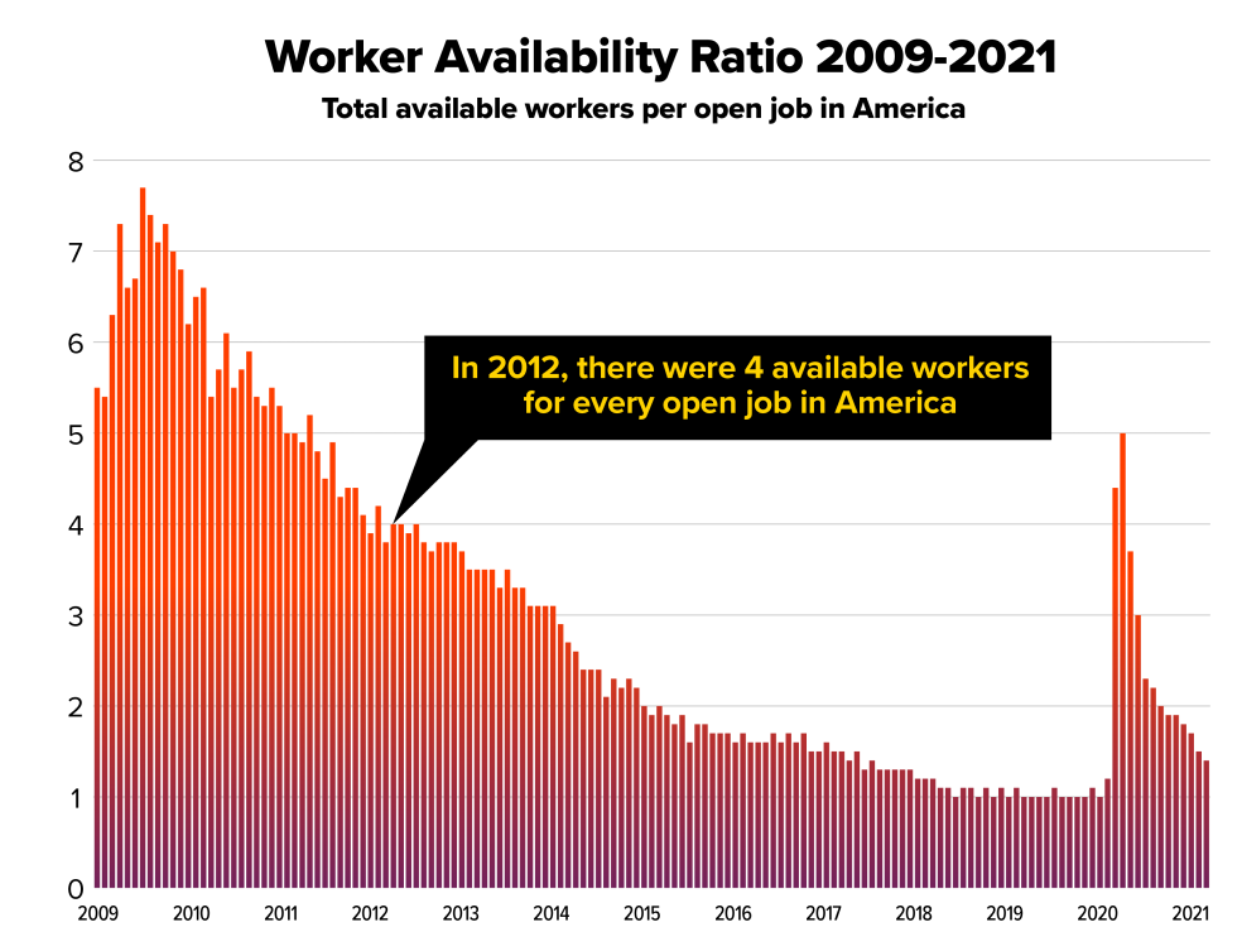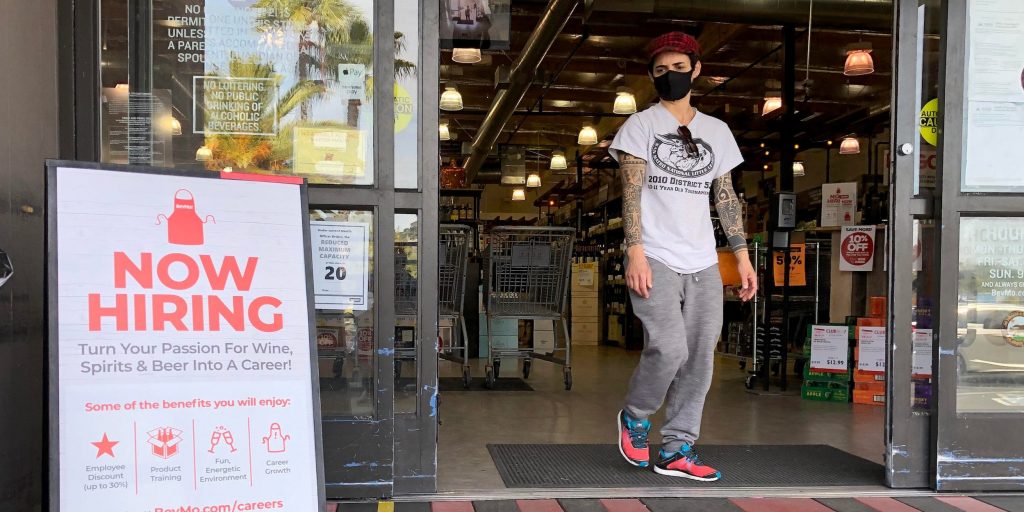
Justin Sullivan/Getty Images
- A shortage of qualified workers is hindering the labor market's recovery, the Chamber of Commerce said.
- Sectoral shifts in worker demand drove a gap between Americans' skillsets and job openings.
- Training programs, childcare support, and an expansion of work visas can counter the mismatch, the Chamber said.
- See more stories on Insider's business page.
The US economy hasn't faced a labor shortage quite like this one.
By several measures, the economy is on the mend. Consumer spending has bounced back, more than half of Americans are fully vaccinated, and the strictest lockdown measures have been reversed. But as businesses look to rehire after months of slowed activity, they're finding it hard to fill openings.
The labor shortage now represents "the most critical and widespread challenge" to US businesses, the US Chamber of Commerce said in a Tuesday report. Only 1.4 available workers exist for each US job opening, according to government data. That's just half the 20-year average, and the ratio is still falling. In sectors hit hardest by the virus, such as education and government, job openings fully exceed available workers.

US Chamber of Commerce
Economists and politicians have pegged the shortfall to a number of factors, ranging from virus fears to enhanced unemployment insurance. The right-leaning Chamber on Tuesday highlighted the country's massive skills gap as fueling the shortage.
"We must arm workers with the skills they need, we must remove barriers that are keeping too many Americans on the sidelines, and we must recruit the very best from around the world to help fill high-demand jobs," Chamber CEO and President Suzanne Clark said.
The organization announced a new initiative on Tuesday aimed at addressing the shortage of qualified workers and difficulties in developing skills. The Chamber is calling for a doubling of the cap on employment visas, federal investment in job-training programs, and an expansion of childcare access for working parents.
A separate survey by The Conference Board echoed the Chamber's remarks. About 80% of organizations hiring industry and manual service workers said it was either "somewhat difficult" or "very difficult" to find qualified employees, up from 74% before the health crisis. The share of firms saying it's "very difficult" to find workers grew to 25% from 4%.
The Chamber's call to action comes as the country forms a wholly new economy. Experts have warned that the post-pandemic economy won't mirror that seen in late 2019. Millions of Americans will struggle to find work as their jobs are permanently erased, Federal Reserve Chair Jerome Powell said in April. Meanwhile, openings will shift to other industries as the country settles into a new normal.
The mismatch between displaced workers' skills and new job openings is among the biggest challenges facing the US labor market, economists at Fitch Ratings said last week. The rapid change in worker demand by sector "can lead to lasting increases in unemployment" if Americans aren't able to quickly pivot, the team said in a note.
Underscoring the mismatch is the decision by GOP governors in 25 states to prematurely end participation in federal unemployment benefits. Those governors have cited increased benefits as a reason that workers are opting not to come back, causing a labor squeeze. But workers say that's not the full story.
Dina Jones, 54, lives in Texas. Her state's governor, Greg Abbott, announced that Texas will pull out of all federal benefits effective June 26. Prior to the pandemic, Jones had worked in the airline industry for 27 years.
"I made a really good living, and to go out and take a $12, $15 job is - I'm very skilled," Jones told Insider. She said she used to manage over 100 employees. She added: "I just don't understand what's happening out here in the world that I can't get a job."
Early signals suggest low-wage workers will have a harder time pivoting than most. A February report from McKinsey found that low-wage sectors - those hit disproportionately hard by the pandemic - will see permanently weaker labor demand as the country recovers. More than half of the workers displaced from such industries will need to develop new skills and find higher-paying jobs to stay employed after the pandemic ends, the firm said.
"Almost all growth in labor demand will occur in high-wage jobs," the report added.
As for Jones, who will lose all of her unemployment benefits come June, it stings to hear her governor say that there are plenty of jobs out there.
"The jobs that are out there aren't the jobs that I used to have, that I'm skilled for, she said. "And that's the part that hurts."
